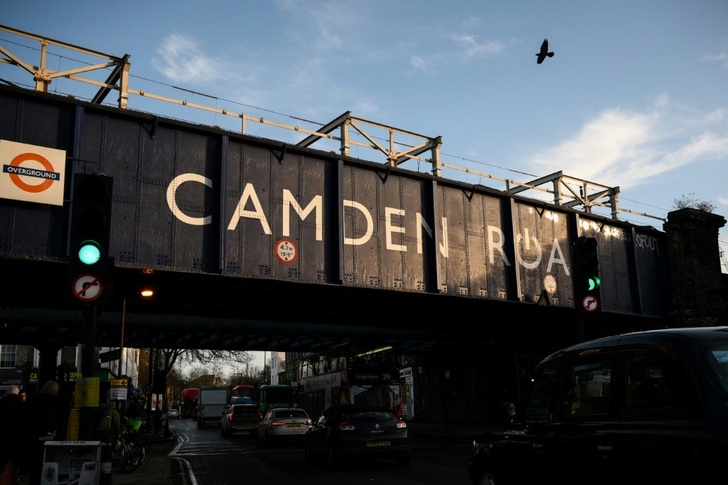London is on track to transform a disused stretch of elevated railway in the heart of the city into a "park in the sky", emulating similar successful schemes in Paris and New York.
Local planning officials are poised to give the first section of the Camden Highline -- named after its famous Manhattan predecessor -- the formal green light next week.
It follows a half-decade of dogged planning, designing and fundraising by an alliance of residents, businesses, politicians and donors to get the project off the ground.
The reimagined 1.2-kilometre (0.75-mile) viaduct will eventually link bustling Camden with the revamped King's Cross district, turning a corridor of overgrown foliage -- adjacent to still-active rail lines -- into a new green space and attraction.
"We're hoping to build an amazing park in the sky," Simon Pitkeathley, who is spearheading the project, told AFP, as he led locals on a regular street-level tour of the planned walkway.
"(It's) going to be a pleasant, beautiful environment in which to move between these very vibrant parts of London."
- Tourists -
Local architects vPPR and James Corner Field Operations, the urban design firm behind New York's acclaimed High Line, drew up the blueprints after beating out competition from dozens of interested companies.

The forerunner to both is the lauded Promenade Plantee in Paris, which was inaugurated in 1993.
James Corner has promised the Camden project will be a "one-of-a-kind elevated park along the viaduct that speaks to the magical symbiosis of nature, culture, arts and community".
The venture has electrified Camden, a vibrant neighbourhood just north of central London best known for its market and nightlife.
"We love the High Line in New York and (we're) very excited that the same company are involved in this one," said resident Charlotte Tansey, checking out the route with her Dalmatian, Ziggy.
"There are so many tourists going through Camden every day, it'd be great for them to have a different viewpoint, just like the one in Manhattan."
- Celebration -
The scheme will differ from its transatlantic namesake given the disused siding's proximity to live rail lines, which will be the other side of thick transparent screens.

The Camden team has agreed a long-term lease for the Victorian-era viaduct from Network Rail, which owns 20,000 miles of track and 30,000 bridges, tunnels and other structures, as well as stations.
The siding on an east-west commuter and freight route has been disused for nearly four decades.
The Highline will incorporate derelict platforms at Camden Road station and a shuttered stairway entrance to it -- one of several envisaged entries along the route.
Its designers aim to "celebrate" the wild twinning of nature and ageing infrastructure, leaving bridge structures exposed and adding new planting and railway artefacts.
Set to be filled with new trees, plants and other vegetation, they also expect it will provide green space to tens of thousands of nearby residents.
- Fundraising -
The entire walkway will be built in phases and estimated to cost at least £35 million ($43 million).

But organisers first need to find an initial £14 million.
The charity formed to deliver the project has already raised and spent around £1 million and hopes to turbocharge further efforts once formal planning permission is granted.
With the support of Camden Council, London Mayor Sadiq Khan and national politicians including main opposition Labour leader Keir Starmer -- who represents the area in parliament --, Pitkeathley insists the money can be found.
He is targeting a combination of high-net-worth individuals, trusts and foundations, public sector organisations and commercial partners.
Fundraisers have already been held with the likes of sculptor Antony Gormley.
Residents along the route, which encompasses several public housing projects, appear enthusiastic.
But some said the cost-of-living crisis gripping Britain could hinder efforts.
"There is an argument that if you spend millions and millions on building walkways, what else could that be spent on," conceded doctor Naomi Craft, 58. "But I think it's exciting."
jj/phz/kjm
© Agence France-Presse
Your content is great. However, if any of the content contained herein violates any rights of yours, including those of copyright, please contact us immediately by e-mail at media[@]kissrpr.com.
Source: Story.KISSPR.com

